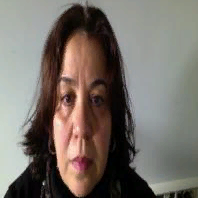International Journal of Image, Graphics and Signal Processing (IJIGSP)
IJIGSP Vol. 6, No. 9, 8 Aug. 2014
Cover page and Table of Contents: PDF (size: 1501KB)
Motion Estimation for Omnidirectional Images using the Adapted Block-Matching
Full Text (PDF, 1501KB), PP.20-26
Views: 0 Downloads: 0
Author(s)
Index Terms
Catadioptric images, adapted neighborhood, motion estimation, Adapted Block-Matching
Abstract
The Block-Matching (BM) method for motion estimation in most video coding is largely discussed in the case of perspective images. The omnidirectional cameras provide images with large field of view. These images contain global information about motion and permit to remove the ambiguity present with little camera motion in perspective case. Nevertheless, these images contain significant radial distortions. The Block-Matching in these catadioptric images is not a resolved problem, and still a challenging research field. A rectangular block representing the neighborhood in BM of a point and used in the perspective images is not appropriate for catadioptric cameras. The work presented in this article concerns the local motion estimation in catadioptric videos with the Adapted Block-Matching (ABM). The ABM based on an adapted neighborhood, the local motion estimation allows successful compensation prediction in catadioptric images. The Adapted Block-Matching is obtained from the equivalence between the omnidirectional image and the projection of scene points on a unit sphere.
Cite This Paper
ALOUACHE Djamal, AMEUR Zohra, KACHI Djemaa,"Motion Estimation for Omnidirectional Images using the Adapted Block-Matching", IJIGSP, vol.6, no.9, pp.20-26, 2014. DOI: 10.5815/ijigsp.2014.09.03
Reference
[1]A. Barjatya, “Block Matching Algorithms for Motion Estimation’’IEEE Trans on Digital Image Proc DIP 6620 Spring 2004 Final Project Paper.
[2]A. Nayak and B. Biswal “Evaluation and Comparison of Motion Estimation Algorithms for Video Compression” International. Journal. Image, Graphics and Signal processing, Vol.10, pp.9-18. 2013
[3]I. Tosic, I. Bogdanova, P. Frossard, and P. Vandergheynst. “Multiresolution motion estimation for omnidirectional images”. Proceedings of EUSIPCO 2005, antalya, September, 2005.
[4]I. Bogdanova, A. Bur, P. Farine, and H. Hügli. “Dynamic visual attention on the sphere”. Journal of Computer Vision and Image Understanding, Vol.114, pp.100–110, 2010.
[5]V. Thirumalai, I. Tosic, and P. Frossard. “Distributed coding of multiresolution omnidirectional images”. Image Processing, ICIP 2007, Vol.2, pp.II – 345 – II – 348, 2007.
[6]I. Tosic and P. Frossard. “Low bit rat compression of omnidirectional images”. Proceedings of PCS, pp.1–4, 2009.
[7]C. Demonceaux and P. Vasseur. “Markov random fields for catadioptric image processing”. Pattern Recognition, Vol.27 pp.1957–1967, 2006.
[8]A. Radgui, C. Demonceaux, E. Mouaddib, D. Aboutajdine and M. Rziza. “An adapted lucas-kanade’s method for optical flow estimation in catadioptric images”. Proceedings of the eighth workshop on Omnidirectional Vision and Camera Networks (OMNIVIS 08), 2008.
[9]Rameau. F., Sidibe. D., Demonceaux,. C. , Fofi, D. “Tracking Moving ObjectsWith a Catadioptric Sensor Using Particle Filter” Computer Vision Workshops (ICCV Workshops), IEEE International Conference. pp. 328 – 334, Barcelona 2011.
[10]C. Geyer and K. Daniilidis, “Paracatadioptric camera calibration,” IEEE Trans on Pattern Analysis and Machine Intelligence, vol. 24, ( 5), 2002.
[11]C. Geyer and K. Daniilidis, “Catadioptric projective geometry,” International Journal of Computer Vision, vol. 45, (3), pp. 223 – 243, December 2001.
[12]A. Radgui, C. Demonceaux, E. Mouaddib, M. Rziza, and D. Aboutajdine. “Optical flow estimation from multichannel spherical image decomposition”. Computer Vision and Image Understanding, Vol.115, pp.1263–1272, 2011.
[13]Z. Wang, A. C. Bovik, H. R. Sheikh and E. P. Simoncelli, "Image quality assessment: From error visibility to structural similarity," IEEE Trans on Image Processing, vol. 13, (4), pp. 600-612, avril 2004.
[14]S. Acharjee and S.S. Chaudhuri “Fuzzy Logic Based Three Step Search Algorithm for Motion Vector Estimation.” International Journal. Image, Graphics and Signal Processing, Vol. 2 pp.37-43, 2012.
[15]M. J. Kim, Y. G. Lee, and J. B. Ra, “A fast multi-resolution block matching algorithm for multiple-frame motion estimation”. IEICE Trans on Information and Systems, Vol. E88-D, (12), pp. 2819-2827, 2005.


